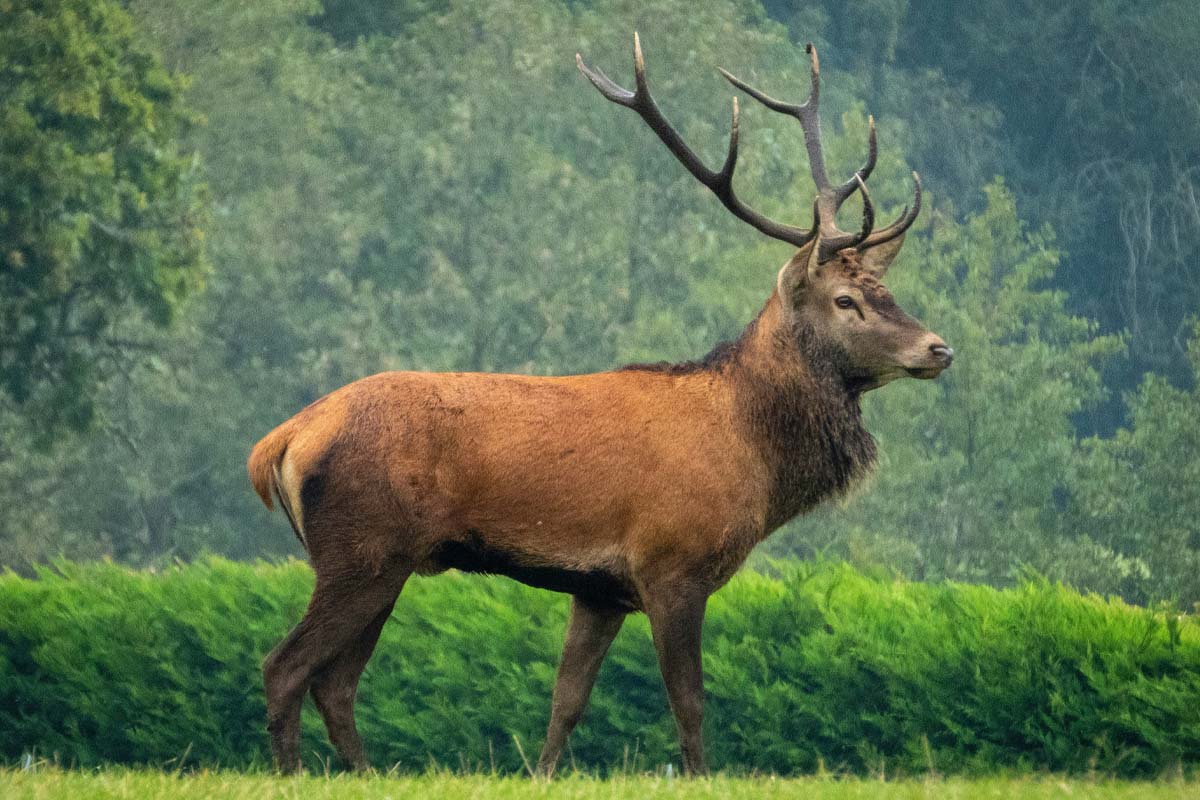HEADTURNED Articles
Stopping Deer Hunting and Culling
Cruelty and environmental degradation
Humanity's disconnect from nature
Introduction
Deer culling and hunting remain grim reminders of humanity's disconnect from nature. These practices, justified under the guise of population control and land management, involve methods so horrific that they shock the conscience. Beyond deer, countless animals fall victim to similar fates, perpetuating a cycle of cruelty and environmental degradation. To change this culture, we must expose these atrocities, understand their impact, and create tangible, ethical solutions.

Humanity's disconnect from nature
The Methods of Deer Hunting and Culling: A Grim Reality
Deer are often culled using brutal techniques that prioritise efficiency over compassion. These methods include:
- Shooting: Marksmen are employed to kill deer with rifles or bows. Poor aim frequently results in non-lethal injuries, leaving animals to suffer prolonged deaths from blood loss or infection.
- Netting and Captive Bolts: Deer are captured in nets before being killed with captive bolts. This process often causes extreme stress, with animals thrashing and crying out before death.
- Hunting for Sport: Trophy hunters target large stags during rutting season, disrupting mating cycles and leaving vulnerable populations without leadership.
- Breeding for Slaughter: Some deer are bred in captivity, only to be killed and processed as a byproduct of sport hunting. These animals live confined lives before their brutal deaths.
Humanity's disconnect from nature
The Justifications for Deer Culling: Fact vs. Fiction
Proponents of deer culling argue that it is necessary for several reasons:
- Population Control: Claims of overpopulation leading to habitat destruction are often exaggerated. Deer populations fluctuate naturally when predators and habitats are balanced.
- Prevention of Disease Spread: While diseases like Chronic Wasting Disease (CWD) are cited, poor wildlife management—including culling itself—often exacerbates these issues.
- Agricultural Protection: Farmers argue that deer damage crops, but alternative solutions like fencing or crop rotation are underutilised.
- Economic Benefits: Hunting licenses generate revenue, incentivising governments to maintain these cruel practices.
Humanity's disconnect from nature
Arguments Against Culling: Ethics and Ecology
- Inhumane Practices: The suffering inflicted on deer violates ethical standards of wildlife management.
- Disruption of Ecosystems: Killing dominant deer alters herd dynamics, leading to increased breeding rates and ecological imbalance.
- Decline in Biodiversity: Unchecked culling contributes to habitat degradation, affecting countless other species reliant on shared ecosystems.
- Economic Costs: The long-term impact of declining biodiversity—including soil erosion, loss of pollinators, and reduced tourism—far outweighs any immediate financial gains.
Humanity's disconnect from nature
Shocking Statistics
- Up to 50,000 deer are culled annually in the UK alone. This figure is consistent with data from organisations like The Wildlife Trusts, which discusses the extensive management practices surrounding deer populations in the UK. Culling is often cited as a measure to control overpopulation and protect habitats.
- 30% of culled animals Poor aim or inadequate techniques contribute to prolonged suffering, as noted in articles about ethical wildlife management. Studies and reports highlight that non-lethal injuries are a significant issue during culling and hunting practices.
- 20 species of wildlife directly impacted by culling practices, including small mammals and birds. This ecological imbalance is a topic of concern among environmental groups like The Wildlife Trusts and various ecological studies.
- 80% of hunting farms operate under loopholes, avoiding prosecution. Reports on wildlife crimes and hunting practices indicate that many farms operate within legal gray areas, exploiting vague definitions or inadequate enforcement of laws. Such loopholes enable these operations to persist under the pretense of conservation or pest control.
Humanity's disconnect from nature
Other Victims: Animals Caught in the Crossfire
- Foxes: Targeted during hunts, often chased and torn apart by hounds.
- Badgers: Killed under the pretense of controlling bovine tuberculosis, despite studies questioning the efficacy of culling.
- Rabbits and Hares: Slaughtered en masse for sport or labeled as agricultural pests.
- Birds of Prey: Poisoned or shot by gamekeepers protecting hunting grounds.
Humanity's disconnect from nature
Exploiting Loopholes and Weak Enforcement
- Game Farms: Many farms operate as hunting reserves, breeding animals for slaughter under the guise of conservation.
- Inadequate Penalties: Weak penalties for illegal hunting fail to deter offenders.
- Legal Grey Areas: Phrases like “pest control” allow hunters to exploit laws meant to protect wildlife.
Humanity's disconnect from nature
Positive Solutions for Wildlife Protection
Safe Zones and Wildlife Parks
Designated safe zones are critical for wildlife to thrive undisturbed. By creating expansive wildlife parks, we provide animals with secure habitats, reduce human-wildlife conflict, and enable ecosystems to regenerate naturally, fostering biodiversity and ecological balance.
Rewilding Initiatives
Reintroducing natural predators, such as wolves, can regulate deer populations effectively without human interference. This approach restores predator-prey dynamics, controls overpopulation, and strengthens ecosystems, creating a harmonious environment where wildlife can flourish naturally.
Ethical Land Management
Adopting sustainable land management practices, such as afforestation and crop rotation, minimizes human-wildlife conflicts. These methods improve soil health, reduce dependency on harmful pesticides, and ensure that farmland and natural habitats coexist sustainably.
Community Engagement
Educating communities about coexistence with wildlife is essential. Workshops, outreach programs, and public campaigns can foster understanding and empathy, encouraging individuals to value and protect the natural world while adopting wildlife-friendly practices.
Strict Enforcement of Laws
Strengthening wildlife protection laws is paramount. Closing legal loopholes and imposing harsher penalties for illegal hunting and culling will deter unethical practices and ensure accountability, safeguarding vulnerable animal populations.
Humanity's disconnect from nature
Restoring Public Trust
Showcasing Thriving Wildlife Populations
Demonstrating positive outcomes, such as increased animal populations and biodiversity, helps to rebuild public trust. Highlighting visible success stories fosters pride and support for conservation efforts.
Success Stories from Rewilding Projects
Sharing narratives of restored ecosystems and species recovery inspires confidence. Examples of rewilding initiatives showcase the potential for balanced coexistence between humans and wildlife.
Public Reporting and Involvement
Encouraging the public to report illegal practices and support conservation actions builds a collective effort. Community participation ensures accountability and strengthens the bond between people and the natural environment.
Humanity's disconnect from nature
Call to Action
We urge governments to:
- Ban deer hunting and culling nationwide.
- Invest in wildlife safe zones and rewilding projects.
- Crack down on loopholes enabling hunting under false pretenses.
Public Responsibility
- Report known farms and individuals supporting these cruel practices.
- Support organisations working to protect wildlife.
- Advocate for ethical wildlife management in their communities.
Together, we can change the culture of cruelty and create a future where wildlife and habitats thrive. Join us in this urgent fight for our planet’s biodiversity.
